Ustekinumab pharmacokinetics after subcutaneous administration in swine model
Tomasz Grabowski, Artur Burmańczuk, Rafał Derlacz, Tadeusz Stefaniak, Anna Rząsa, Jacek Borkowski
Journal of Veterinary Science
 Background: Due to multiple similarities in the structure and physiology of human and pig skin, the pig model is extremely useful for biological drug testing after subcutaneous administration. Knowledge of the differences between subcutaneous injection sites could have a significant impact on the absorption phase and pharmacokinetic profiles of biological drugs. Objectives: This study aimed to analyze the impact of administration site on pharmacokinetics and selected biochemical and hematological parameters after a single subcutaneous administration of ustekinumab in pigs. Drug concentrations in blood plasma were analyzed by enzyme-linked immunosorbent assay. Pharmacokinetic analyses were performed based on raw data using Phoenix WinNonlin 8.1 software and ThothPro v 4.1. Methods: The study included 12 healthy, female, large white piglets. Each group received a single dose of ustekinumab given as a 1 mg/kg subcutaneous injection into the internal part of the inguinal fold or the external part of the inguinal fold. Results: The differences in absorption rate between the internal and external parts of the inguinal fold were not significant. However, the time of maximal concentration, clearance, area under the curve calculated between zero and mean residence time and mean residence time between groups were substantially different (p > 0.05). The relative bioavailability after administration of ustekinumab into the external part of the inguinal fold was 40.36% lower than after administration of ustekinumab into the internal part of the inguinal fold. Conclusions: Healthy breeding pigs are a relevant model to study the pharmacokinetic profile of subcutaneously administered ustekinumab.
Background: Due to multiple similarities in the structure and physiology of human and pig skin, the pig model is extremely useful for biological drug testing after subcutaneous administration. Knowledge of the differences between subcutaneous injection sites could have a significant impact on the absorption phase and pharmacokinetic profiles of biological drugs. Objectives: This study aimed to analyze the impact of administration site on pharmacokinetics and selected biochemical and hematological parameters after a single subcutaneous administration of ustekinumab in pigs. Drug concentrations in blood plasma were analyzed by enzyme-linked immunosorbent assay. Pharmacokinetic analyses were performed based on raw data using Phoenix WinNonlin 8.1 software and ThothPro v 4.1. Methods: The study included 12 healthy, female, large white piglets. Each group received a single dose of ustekinumab given as a 1 mg/kg subcutaneous injection into the internal part of the inguinal fold or the external part of the inguinal fold. Results: The differences in absorption rate between the internal and external parts of the inguinal fold were not significant. However, the time of maximal concentration, clearance, area under the curve calculated between zero and mean residence time and mean residence time between groups were substantially different (p > 0.05). The relative bioavailability after administration of ustekinumab into the external part of the inguinal fold was 40.36% lower than after administration of ustekinumab into the internal part of the inguinal fold. Conclusions: Healthy breeding pigs are a relevant model to study the pharmacokinetic profile of subcutaneously administered ustekinumab.
DOI:10.4142/jvs.2021.22.e47
Sustainable Surfactin Production by Bacillus subtilis Using Crude Glycerol from Different Wastes
Tomasz Janek, Eduardo J. Gudiña, Xymena Połomska, Piotr Biniarz, Dominika Jama, Lígia R. Rodrigues, Waldemar Rymowicz, Zbigniew Lazar
Molecules
 Most biosurfactants are obtained using costly culture media and purification processes, which limits their wider industrial use. Sustainability of their production processes can be achieved, in part, by using cheap substrates found among agricultural and food wastes or byproducts. In the present study, crude glycerol, a raw material obtained from several industrial processes, was evaluated as a potential low-cost carbon source to reduce the costs of surfactin production by Bacillus subtilis #309. The culture medium containing soap-derived waste glycerol led to the best surfactin production, reaching about 2.8 g/L. To the best of our knowledge, this is the first report describing surfactin production by B. subtilis using stearin and soap wastes as carbon sources. A complete chemical characterization of surfactin analogs produced from the different waste glycerol samples was performed by liquid chromatography–mass spectrometry (LC-MS) and Fourier transform infrared spectroscopy (FTIR). Furthermore, the surfactin produced in the study exhibited good stability in a wide range of pH, salinity and temperatures, suggesting its potential for several applications in biotechnology.
Most biosurfactants are obtained using costly culture media and purification processes, which limits their wider industrial use. Sustainability of their production processes can be achieved, in part, by using cheap substrates found among agricultural and food wastes or byproducts. In the present study, crude glycerol, a raw material obtained from several industrial processes, was evaluated as a potential low-cost carbon source to reduce the costs of surfactin production by Bacillus subtilis #309. The culture medium containing soap-derived waste glycerol led to the best surfactin production, reaching about 2.8 g/L. To the best of our knowledge, this is the first report describing surfactin production by B. subtilis using stearin and soap wastes as carbon sources. A complete chemical characterization of surfactin analogs produced from the different waste glycerol samples was performed by liquid chromatography–mass spectrometry (LC-MS) and Fourier transform infrared spectroscopy (FTIR). Furthermore, the surfactin produced in the study exhibited good stability in a wide range of pH, salinity and temperatures, suggesting its potential for several applications in biotechnology.
DOI:10.3390/molecules26123488
New Bird Sexing Strategy Developed in the Order Psittaciformes Involves Multiple Markers to Avoid Sex Misidentification: Debunked Myth of the Universal DNA Marker
Aleksandra Kroczak, Magdalena Wołoszyńska, Heliodor Wierzbicki, Marcin Kurkowski, Krzysztof Aleksander Grabowski, Tomasz Piasecki, Livio Galosi, Adam Urantówka
Genes
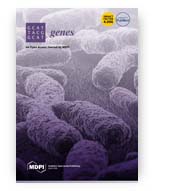 Sexing of birds is indispensable for scientific, breeding and conservation programs but is difficult in many species and is particularly problematic in the case of nestlings showing no sexual dimorphism. Most useful and efficient methods of sex determination are based on unique features of the Z and W sex chromosomes detected via PCR to distinguish males (ZZ) and females (ZW). During the last twenty-five years researchers searched for the universal marker capable of sexing a maximally wide spectrum of species in a single PCR assay. We screened the phylogenetically representative set of 135 Psittaciformes species including 59 species sexed for the first time. Two known (P2P8, CHD1iA) PCR markers and four additional W/Z polymorphisms (CHD1iE, CHD1i16, CHD1i9 and NIPBLi16) located within the Chromo Helicase DNA binding CHD1 or the Nipped-B homolog NIPBL genes were applied. We present the electrophoretic patterns obtained for the PCR products of the analyzed markers including most typical and atypical patterns allowing sex determination, as well as those obtained when the given marker failed in sexing. Technical aspects of molecular sex determination are discussed: the optimization of amplification conditions, direct PCR and potential misinterpretations. A truly universal marker has not been found, and therefore, we propose a sexing strategy based on multiple CHD1i16, NIPBLi16, CHD1i9 and CHD1iE markers. This new strategy confirms the sex of a given bird with at least two markers detecting independent Z/W polymorphisms, reduces the number of necessary PCR reactions and minimizes the risk of sex misidentification.
Sexing of birds is indispensable for scientific, breeding and conservation programs but is difficult in many species and is particularly problematic in the case of nestlings showing no sexual dimorphism. Most useful and efficient methods of sex determination are based on unique features of the Z and W sex chromosomes detected via PCR to distinguish males (ZZ) and females (ZW). During the last twenty-five years researchers searched for the universal marker capable of sexing a maximally wide spectrum of species in a single PCR assay. We screened the phylogenetically representative set of 135 Psittaciformes species including 59 species sexed for the first time. Two known (P2P8, CHD1iA) PCR markers and four additional W/Z polymorphisms (CHD1iE, CHD1i16, CHD1i9 and NIPBLi16) located within the Chromo Helicase DNA binding CHD1 or the Nipped-B homolog NIPBL genes were applied. We present the electrophoretic patterns obtained for the PCR products of the analyzed markers including most typical and atypical patterns allowing sex determination, as well as those obtained when the given marker failed in sexing. Technical aspects of molecular sex determination are discussed: the optimization of amplification conditions, direct PCR and potential misinterpretations. A truly universal marker has not been found, and therefore, we propose a sexing strategy based on multiple CHD1i16, NIPBLi16, CHD1i9 and CHD1iE markers. This new strategy confirms the sex of a given bird with at least two markers detecting independent Z/W polymorphisms, reduces the number of necessary PCR reactions and minimizes the risk of sex misidentification.
DOI:10.3390/genes12060878
Environmental Factors Effects on Winter Wheat Competition with Herbicide-Resistant or Susceptible Silky Bentgrass (Apera spica-venti L.) in Poland
Agnieszka Synowiec, Beata Jop, Krzysztof Domaradzki, Cezary Podsiadło, Dorota Gawęda, Roman Wacławowicz, Anna Wenda-Piesik, Mateusz M. Nowakowski, Jan Bocianowski, Katarzyna Marcinkowska, Tadeusz Praczyk
Agronomy
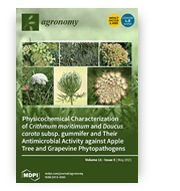 Environmental factors, including weather and soil conditions, can affect the competitive effects of weeds on crops. This work aimed at a comparison of the competitive abilities of winter wheat toward bentgrass (Apera spica-venti (L.) P. Beauv) with single herbicide resistance, multiple herbicide resistance, or a susceptible biotype in different environmental conditions of Poland. A replacement series competition model was applied in field conditions in 2017–2018 and 2018–2019 across the country. A competitive ratio (CR) was calculated for the relative biomass of plants and grain number. A canonical variate analysis (CVA) was performed for biological parameters and a day-difference in emergence between winter wheat and bentgrass with the hydrothermal coefficient and soil texture in all of the sites in each season separately. Winter wheat emergence was correlated with the amount of precipitation after seeding, and was fastest for five days in humid conditions, and slowest up to 22 days, when the precipitation in October was low. The CVA proved that winter wheat’s competitive effects toward the susceptible or herbicide-resistant biotypes of bentgrass are site-specific. During the dry season, the bentgrass biotype with multiple herbicide resistance was more competitive toward winter wheat than the susceptible one. The wheat CR < 1 with regard to biomass and both biomass and the grain number was in 64% and 50% of all the combinations with the resistant biotype. In conclusion, weather affects the competitive effects of winter wheat toward herbicide-susceptible or resistant bentgrass.
Environmental factors, including weather and soil conditions, can affect the competitive effects of weeds on crops. This work aimed at a comparison of the competitive abilities of winter wheat toward bentgrass (Apera spica-venti (L.) P. Beauv) with single herbicide resistance, multiple herbicide resistance, or a susceptible biotype in different environmental conditions of Poland. A replacement series competition model was applied in field conditions in 2017–2018 and 2018–2019 across the country. A competitive ratio (CR) was calculated for the relative biomass of plants and grain number. A canonical variate analysis (CVA) was performed for biological parameters and a day-difference in emergence between winter wheat and bentgrass with the hydrothermal coefficient and soil texture in all of the sites in each season separately. Winter wheat emergence was correlated with the amount of precipitation after seeding, and was fastest for five days in humid conditions, and slowest up to 22 days, when the precipitation in October was low. The CVA proved that winter wheat’s competitive effects toward the susceptible or herbicide-resistant biotypes of bentgrass are site-specific. During the dry season, the bentgrass biotype with multiple herbicide resistance was more competitive toward winter wheat than the susceptible one. The wheat CR < 1 with regard to biomass and both biomass and the grain number was in 64% and 50% of all the combinations with the resistant biotype. In conclusion, weather affects the competitive effects of winter wheat toward herbicide-susceptible or resistant bentgrass.
DOI:10.3390/agronomy11050871
Effect of Vegetable Oils Feed Additives on Endoparasites Associated with Dewormed Racing Horses
Wanda Górniak, Hanna Moniuszko, Konrad Wojnarowski, Aleksander Górniak, Paulina Cholewińska, Agnieszka Waliczek, Maria Soroko, Natalia Szeligowska
Agriculture (Switzerland)
 The effectiveness of commonly used parasiticides decreases due to the drug resistance developed by many organisms. Therefore, the application of feed additives possessing antiparasitic properties may be helpful in limiting the burden of parasites. The aim of this research was to evaluate parasitological coefficients for endoparasites of regularly dewormed Arabian horses and Thoroughbreds, fed on a basal diet of oat and muesli with vegetable oils and/or without vitamin E. The observations revealed parasitic invasion in 25 of 27 examined horses. The most frequent in both breeds were Strongylidae—accounting for 86% of Thoroughbreds and 100% of Arabian horses. Strongyloididae were observed in 33% of individuals representing both breeds while botflies were found in one Arabian horse and one Thoroughbred. Mean EPG coefficients for strongylids and strongyloidids were higher in Thoroughbreds (530 vs. 529 and 43 vs. 29, respectively), although the differences were not statistically significant. The addition of pure linseed oil significantly reduced the number of Strongylidae in fecal samples. The results indicate that properly selected plant additives obtained from arable crops may be helpful in limiting the numbers of drug-resistant strongylids.
The effectiveness of commonly used parasiticides decreases due to the drug resistance developed by many organisms. Therefore, the application of feed additives possessing antiparasitic properties may be helpful in limiting the burden of parasites. The aim of this research was to evaluate parasitological coefficients for endoparasites of regularly dewormed Arabian horses and Thoroughbreds, fed on a basal diet of oat and muesli with vegetable oils and/or without vitamin E. The observations revealed parasitic invasion in 25 of 27 examined horses. The most frequent in both breeds were Strongylidae—accounting for 86% of Thoroughbreds and 100% of Arabian horses. Strongyloididae were observed in 33% of individuals representing both breeds while botflies were found in one Arabian horse and one Thoroughbred. Mean EPG coefficients for strongylids and strongyloidids were higher in Thoroughbreds (530 vs. 529 and 43 vs. 29, respectively), although the differences were not statistically significant. The addition of pure linseed oil significantly reduced the number of Strongylidae in fecal samples. The results indicate that properly selected plant additives obtained from arable crops may be helpful in limiting the numbers of drug-resistant strongylids.
DOI:10.3390/agriculture11060525
Effect of Filtrated Osmotic Solution Based on Concentrated Chokeberry Juice and Mint Extract on the Drying Kinetics, Energy Consumption and Physicochemical Properties of Dried Apples
Klaudia Masztalerz, Jacek Łyczko, Krzysztof Lech
Molecules
 Background: Filtration of osmotic solution affects selective penetration during osmotic dehydration (OD), and after drying is finished, this can influence the chemical composition of the material, which is also modified by OD. Methods: Osmotic dehydration was carried out in filtrated and non-filtrated concentrated chokeberry juice with the addition of mint infusion. Then, this underwent convective drying, vacuum-microwave drying and combined convective pre-drying, followed by vacuum-microwave finishing drying. Drying kinetics were presented and mathematical models were selected. The specific energy consumption for each drying method was calculated and the energy efficiency was determined. Results and Discussion: The study revealed that filtration of osmotic solution did not have significant effect on drying kinetics; however, it affected selective penetration during OD. The highest specific energy consumption was obtained for the samples treated by convective drying (CD) (around 170 kJ·g−1 fresh weight (fw)) and the lowest for the samples treated by vacuum-microwave drying (VMD) (around 30 kJ·g−1 fw), which is due to the differences in the time of drying and when these methods are applied. Conclusions: Filtration of the osmotic solution can be used to obtain the desired material after drying and the VMD method is the most appropriate considering both phenolic acid content and the energy aspect of drying.
Background: Filtration of osmotic solution affects selective penetration during osmotic dehydration (OD), and after drying is finished, this can influence the chemical composition of the material, which is also modified by OD. Methods: Osmotic dehydration was carried out in filtrated and non-filtrated concentrated chokeberry juice with the addition of mint infusion. Then, this underwent convective drying, vacuum-microwave drying and combined convective pre-drying, followed by vacuum-microwave finishing drying. Drying kinetics were presented and mathematical models were selected. The specific energy consumption for each drying method was calculated and the energy efficiency was determined. Results and Discussion: The study revealed that filtration of osmotic solution did not have significant effect on drying kinetics; however, it affected selective penetration during OD. The highest specific energy consumption was obtained for the samples treated by convective drying (CD) (around 170 kJ·g−1 fresh weight (fw)) and the lowest for the samples treated by vacuum-microwave drying (VMD) (around 30 kJ·g−1 fw), which is due to the differences in the time of drying and when these methods are applied. Conclusions: Filtration of the osmotic solution can be used to obtain the desired material after drying and the VMD method is the most appropriate considering both phenolic acid content and the energy aspect of drying.
DOI:10.3390/molecules26113274
Dementia Enlightened?! A Systematic Literature Review of the Influence of Indoor Environmental Light on the Health of Older Persons with Dementia in Long-Term Care Facilities
Ingrid Goudriaan, Leonieke C. Van Boekel, Marjolein E. A. Verbiest, Joost Van Hoof, Katrien G. Luijkx
Clinical interventions in aging
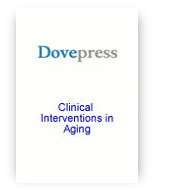 Light therapy for older persons with dementia is often administered with light boxes, even though indoor ambient light may more comfortably support the diverse lighting needs of this population. Our objective is to investigate the influence of indoor daylight and lighting on the health of older adults with dementia living in long-term care facilities. A systematic literature search was performed within PubMed, CINAHL, PsycINFO, Web of Science and Scopus databases. The included articles (n=37) were published from 1991 to 2020. These articles researched the influence of existing and changed indoor light conditions on health and resulted in seven categories of health outcomes. Although no conclusive evidence was found to support the ability of indoor light to decrease challenging behaviors or improve circadian rhythms, findings of two studies indicate that exposure to (very) cool light of moderate intensity diminished agitation. Promising effects of indoor light were to reduce depressive symptoms and facilitate spatial orientation. Furthermore, there were indications that indoor light improved one’s quality of life. Despite interventions with dynamic lighting having yielded little evidence of its efficacy, its potential has been insufficiently researched among this study population. This review provides a clear and comprehensive description of the impact of diverse indoor light conditions on the health of older adults with dementia living in long-term care facilities. Variation was seen in terms of research methods, (the description of) light conditions, and participants’ characteristics (types and severity of dementia), thus confounding the reliability of the findings. The authors recommend further research to corroborate the beneficial effects of indoor light on depression and to clarify its role in supporting everyday activities of this population. An implication for practice in long-term care facilities is raising the awareness of the increased lighting needs of aged residents.
Light therapy for older persons with dementia is often administered with light boxes, even though indoor ambient light may more comfortably support the diverse lighting needs of this population. Our objective is to investigate the influence of indoor daylight and lighting on the health of older adults with dementia living in long-term care facilities. A systematic literature search was performed within PubMed, CINAHL, PsycINFO, Web of Science and Scopus databases. The included articles (n=37) were published from 1991 to 2020. These articles researched the influence of existing and changed indoor light conditions on health and resulted in seven categories of health outcomes. Although no conclusive evidence was found to support the ability of indoor light to decrease challenging behaviors or improve circadian rhythms, findings of two studies indicate that exposure to (very) cool light of moderate intensity diminished agitation. Promising effects of indoor light were to reduce depressive symptoms and facilitate spatial orientation. Furthermore, there were indications that indoor light improved one’s quality of life. Despite interventions with dynamic lighting having yielded little evidence of its efficacy, its potential has been insufficiently researched among this study population. This review provides a clear and comprehensive description of the impact of diverse indoor light conditions on the health of older adults with dementia living in long-term care facilities. Variation was seen in terms of research methods, (the description of) light conditions, and participants’ characteristics (types and severity of dementia), thus confounding the reliability of the findings. The authors recommend further research to corroborate the beneficial effects of indoor light on depression and to clarify its role in supporting everyday activities of this population. An implication for practice in long-term care facilities is raising the awareness of the increased lighting needs of aged residents.
DOI:10.2147/CIA.S297865
Characteristics of Reconstituted Collagen Fibers from Chicken Keel Cartilage Depends on Salt Type for Removal of Proteoglycans
Anna Pudło, Szymon Juchniewicz, Wiesław Kopeć
Molecules
 The aim of the presented research was to obtain reconstituted atelocollagen fibers after extraction from poultry cartilage using the pepsin-acidic method in order to remove telopeptides from the tropocollagen. Firstly, we examined the extraction of collagen from the cartilage extracellular matrix (ECM) after proteoglycans (PG) had been removed by the action of salts, i.e., NaCl or chaotropic MgCl2. Additionally, the effects of the salt type used for PG and hyaluronic acid removal on the properties of self-assembled fibers in solutions at pH 7.4 and freeze-dried matrices were investigated. The basic features of the obtained fibers were characterized, including thermal properties using scanning calorimetry, rheological properties using dynamic oscillatory rheometry, and the structure by scanning electron microscopy. The fibers obtained after PG removal with both analyzed types of salts had similar thermal denaturation characteristics. However, the fibers after PG removal with NaCl, in contrast to those obtained after MgCl2 treatment, showed different rheological properties during gelatinization and smaller diameter size. Moreover, the degree of fibrillogenesis of collagens after NaCl treatment was complete compared to that with MgCl2, which was only partial (70%). The structures of fibers after lyophilization were fundamentally different. The matrices obtained after NaCl pretreatment form regular scaffolds in contrast to the thin, surface structures of the cartilage matrix after proteoglycans removal using MgCl2.
The aim of the presented research was to obtain reconstituted atelocollagen fibers after extraction from poultry cartilage using the pepsin-acidic method in order to remove telopeptides from the tropocollagen. Firstly, we examined the extraction of collagen from the cartilage extracellular matrix (ECM) after proteoglycans (PG) had been removed by the action of salts, i.e., NaCl or chaotropic MgCl2. Additionally, the effects of the salt type used for PG and hyaluronic acid removal on the properties of self-assembled fibers in solutions at pH 7.4 and freeze-dried matrices were investigated. The basic features of the obtained fibers were characterized, including thermal properties using scanning calorimetry, rheological properties using dynamic oscillatory rheometry, and the structure by scanning electron microscopy. The fibers obtained after PG removal with both analyzed types of salts had similar thermal denaturation characteristics. However, the fibers after PG removal with NaCl, in contrast to those obtained after MgCl2 treatment, showed different rheological properties during gelatinization and smaller diameter size. Moreover, the degree of fibrillogenesis of collagens after NaCl treatment was complete compared to that with MgCl2, which was only partial (70%). The structures of fibers after lyophilization were fundamentally different. The matrices obtained after NaCl pretreatment form regular scaffolds in contrast to the thin, surface structures of the cartilage matrix after proteoglycans removal using MgCl2.
DOI:10.3390/molecules26123538
Changes in water demand patterns in a European city due to restrictions caused by the COVID-19 pandemic
Jan Kazak, Szymon Szewrański, Tomasz Pilawka, Katarzyna Tokarczyk-Dorociak, Kamil Janiak, Małgorzata Świąder
Desalination and Water Treatment
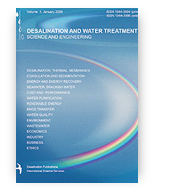 A COVID-19 pandemic in early 2020 has significant impact on socio-economic systems worldwide, which are strongly connected with the use of natural resources. Restrictions introduced in many countries changed the daily habits of society and set hygiene standards to support public health. This study aimed to define how water demand patterns have changed during the lockdown, cover-ing both the amount of consumed water resources as well as its location within the city. The study uses a visual analytics approach for detecting changes in water use patterns in the period from January 2018 to April 2020 for the case of a regional European city (Wrocław, Poland). The results of the study showed that the total water consumption in April 2020 did not change significantly, therefore, it did not impact available water resources in the water supply system. However, the amount of used water in different water intake points changed comparing to the previous month mostly in housing buildings (+13.2%), commercial objects (–17.2%), and education facilities (–38.1%). The relatively similar structure of groups of users within the city is a favorable fac-tor, as it results in stable water consumption in each urban district, which is beneficial from the point of view of the urban water supply system. The results of the research might be useful for emergency preparedness in urban water and wastewater utilities in case of unexpected events.
A COVID-19 pandemic in early 2020 has significant impact on socio-economic systems worldwide, which are strongly connected with the use of natural resources. Restrictions introduced in many countries changed the daily habits of society and set hygiene standards to support public health. This study aimed to define how water demand patterns have changed during the lockdown, cover-ing both the amount of consumed water resources as well as its location within the city. The study uses a visual analytics approach for detecting changes in water use patterns in the period from January 2018 to April 2020 for the case of a regional European city (Wrocław, Poland). The results of the study showed that the total water consumption in April 2020 did not change significantly, therefore, it did not impact available water resources in the water supply system. However, the amount of used water in different water intake points changed comparing to the previous month mostly in housing buildings (+13.2%), commercial objects (–17.2%), and education facilities (–38.1%). The relatively similar structure of groups of users within the city is a favorable fac-tor, as it results in stable water consumption in each urban district, which is beneficial from the point of view of the urban water supply system. The results of the research might be useful for emergency preparedness in urban water and wastewater utilities in case of unexpected events.
DOI:10.5004/dwt.2021.27242
Changes in anti-nutrient, phytochemical, and micronutrient contents of different processed rubber (Hevea brasiliensis) seed meals
Chidinma M. Agbai, Ijeoma A. Olawuni, Chigozie E. Ofoedu, Chidi J. Ibeabuchi, Charles Odilichukwu R. Okpala, Ivan Shorstkii, Małgorzata Korzeniowska
PeerJ
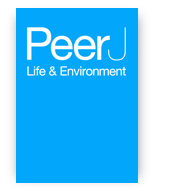 Rubber (Hevea brasiliensis) is a perennial plant crop grown in many parts of Africa, South East Asia, and South America, especially within the hot and humid climatic regions. Rubber seed, either as feed or food, is a useful raw material to produce edible oil and protein. Despite the huge quantity of rubber seeds produced in Nigeria and its potential as a protein source, rubber seeds still appear neglected and under-utilised as feed/food given its perception as inedible and toxic due to the high concentration of cyanogenic glycoside. Therefore, the quest for effective processing technique(s) that would enhance its food use application is very fitting. This current study was directed to determine the changes in anti-nutrient, phytochemical, and micronutrient contents of different processed rubber seed meals. Specifically, the rubber seeds underwent processing, which employed boiling and the combined action of boiling and fermentation methods that brought about three seed meal flour groups, i.e., raw (RRSM), boiled (BRSM), and fermented (FRSM) seed meals. These were subsequently analysed for anti-nutrient/phytochemical (oxalate, phytate, tannin, phenols, saponin, hydrogen cyanide (HCN), alkaloids, flavonoids, and trypsin inhibitors), and micronutrient (which involved minerals (magnesium, phosphorus, calcium, iron, zinc, potassium, sodium, manganese, lead, and selenium) and vitamin (vitamin B1, B2, B3, C, E, and beta carotene)) contents. The results showed that the processing methods used to achieve the RRSM, BRSM, and FRSM, reduced the anti-nutrients (phytate, tannin, and oxalate) below the acceptable limits, and the HCN below the toxic levels. Importantly, the processing methods herein have not yet succeeded in removing HCN in the (processed) rubber seed meals, but can be seen to be heading toward the right direction. The FRSM obtained significantly lower (p < 0.05) anti-nutrient/phytochemical, but significantly higher (p < 0.05) mineral contents, compared with the other groups (RRSM and BRSM), except for flavonoids that obtained a 30% increase over the BRSM. Some mineral and vitamin contents could be lost in the BRSM compared to the others (RRSM and FRSM) in this study. Additionally, the FRSM obtained higher vitamin contents, after those of RRSM. Overall, the combined action of boiling and fermentation should be recommended for the proper utilisation of rubber seed as food/feed.
Rubber (Hevea brasiliensis) is a perennial plant crop grown in many parts of Africa, South East Asia, and South America, especially within the hot and humid climatic regions. Rubber seed, either as feed or food, is a useful raw material to produce edible oil and protein. Despite the huge quantity of rubber seeds produced in Nigeria and its potential as a protein source, rubber seeds still appear neglected and under-utilised as feed/food given its perception as inedible and toxic due to the high concentration of cyanogenic glycoside. Therefore, the quest for effective processing technique(s) that would enhance its food use application is very fitting. This current study was directed to determine the changes in anti-nutrient, phytochemical, and micronutrient contents of different processed rubber seed meals. Specifically, the rubber seeds underwent processing, which employed boiling and the combined action of boiling and fermentation methods that brought about three seed meal flour groups, i.e., raw (RRSM), boiled (BRSM), and fermented (FRSM) seed meals. These were subsequently analysed for anti-nutrient/phytochemical (oxalate, phytate, tannin, phenols, saponin, hydrogen cyanide (HCN), alkaloids, flavonoids, and trypsin inhibitors), and micronutrient (which involved minerals (magnesium, phosphorus, calcium, iron, zinc, potassium, sodium, manganese, lead, and selenium) and vitamin (vitamin B1, B2, B3, C, E, and beta carotene)) contents. The results showed that the processing methods used to achieve the RRSM, BRSM, and FRSM, reduced the anti-nutrients (phytate, tannin, and oxalate) below the acceptable limits, and the HCN below the toxic levels. Importantly, the processing methods herein have not yet succeeded in removing HCN in the (processed) rubber seed meals, but can be seen to be heading toward the right direction. The FRSM obtained significantly lower (p < 0.05) anti-nutrient/phytochemical, but significantly higher (p < 0.05) mineral contents, compared with the other groups (RRSM and BRSM), except for flavonoids that obtained a 30% increase over the BRSM. Some mineral and vitamin contents could be lost in the BRSM compared to the others (RRSM and FRSM) in this study. Additionally, the FRSM obtained higher vitamin contents, after those of RRSM. Overall, the combined action of boiling and fermentation should be recommended for the proper utilisation of rubber seed as food/feed.
DOI:10.7717/peerj.11327
Biomechanical-Structural Correlation of Chordae tendineae in Animal Models: A Pilot Study
Justyn Gach, Izabela Janus, Agnieszka Mackiewicz, Tomasz Klekiel, Agnieszka Noszczyk-Nowak
Animals
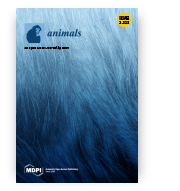 The mitral valve apparatus is a complex structure consisting of the mitral ring, valve leaflets, papillary muscles and Chordae tendineae (CT). The latter are mainly responsible for the mechanical functions of the valve. Our study included investigations of the biomechanical and structural properties of CT collected from canine and porcine hearts, as there are no studies about these properties of canine CT. We performed a static uniaxial tensile test on CT samples and a histopathological analysis in order to examine their microstructure. The results were analyzed to clarify whether the changes in mechanical persistence of Chordae tendineae are combined with the alterations in their structure. This study offers clinical insight for future research, allowing for an understanding of the process of Chordae tendineae rupture that happens during degenerative mitral valve disease—the most common heart disease in dogs.
The mitral valve apparatus is a complex structure consisting of the mitral ring, valve leaflets, papillary muscles and Chordae tendineae (CT). The latter are mainly responsible for the mechanical functions of the valve. Our study included investigations of the biomechanical and structural properties of CT collected from canine and porcine hearts, as there are no studies about these properties of canine CT. We performed a static uniaxial tensile test on CT samples and a histopathological analysis in order to examine their microstructure. The results were analyzed to clarify whether the changes in mechanical persistence of Chordae tendineae are combined with the alterations in their structure. This study offers clinical insight for future research, allowing for an understanding of the process of Chordae tendineae rupture that happens during degenerative mitral valve disease—the most common heart disease in dogs.
DOI:10.3390/ani11061678









